Rescued hens' journey from battery cage to Samlesbury Hall's stately grounds
and live on Freeview channel 276
But now this brood of 25 hens have become prolific egg layers after being saved from a battery cage, adopted from a rescue charity and re-homed at the stately Samlesbury Hall, near Preston, in December.
Lauren Caterall, assistant director, said: “They were in a terrible condition when they first came here. They were featherless with wobbly legs and no colour to them.”
Advertisement
Hide AdAdvertisement
Hide AdCommenting on how timid and frightened they were, Lauren added: “They all stayed inside the shed and didn’t want to come outside.”
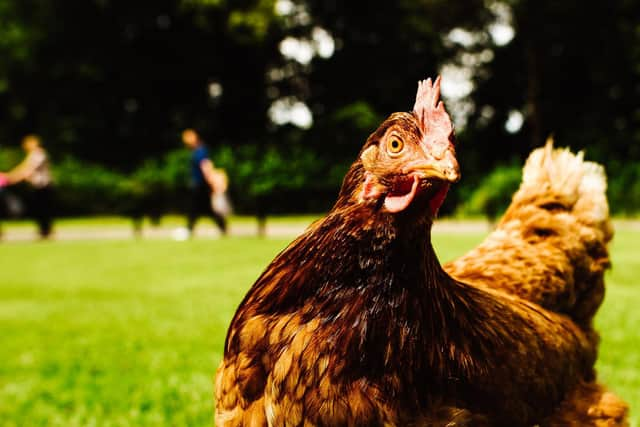

Lucky Hens Rescue in Wigan saved the brood from an enriched colony with 80 birds per cag.
Lauren and her team were so moved by a Tweet written by the animal sanctuary that they decided to take the hens on.
Sharon Jones, Samlesbury Hall director, said: “They were a sad sight when they first arrived. But the flock quickly settled into life here at the hall.
Advertisement
Hide AdAdvertisement
Hide Ad“It’s quite a turnaround for them, going from a caged environment to a free-range lifestyle in the grounds of a stately home.”
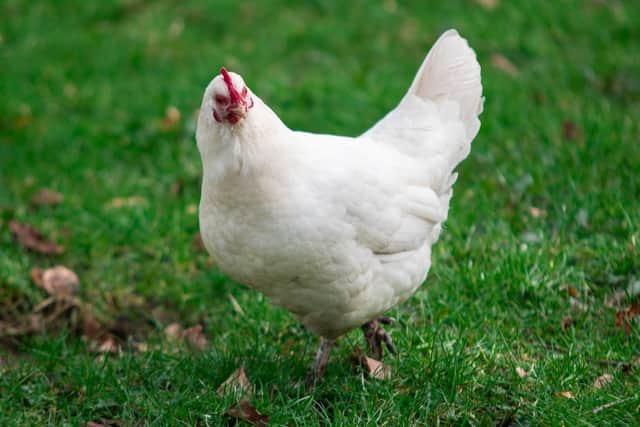

The birds are now fat and colourful and enjoy visits by the public, Lauren added.
“They are now all happy and friendly, and visitors are able to get close to them,” she said.
They have also earned a reputation as prolific egg-layers for the Samlesbury Hall chefs, as well as supplying Dotties, the nation’s first dedicated wafflery.
Advertisement
Hide AdAdvertisement
Hide AdSharon said: “Everyone loves having them here, they’re such characters, and they are helping to provide a vital ingredient for our homemade food with zero food miles.
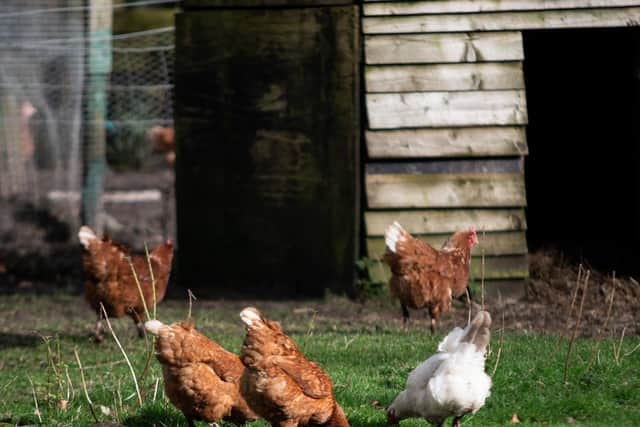

“It’s been an incredible experience to watch them arrive in fairly poor health and to see their transformation into happy, healthy, glossy individuals in a relatively short period of time.”
Lucky Hens Rescue in Wigan
Alison Thorpe set up the voluntary animal sanctuary in 2010 to rescue and rehome hens and cockerels from caged farms.
She said: “People think battery farms no longer exist but they do. They’re just under a different name.
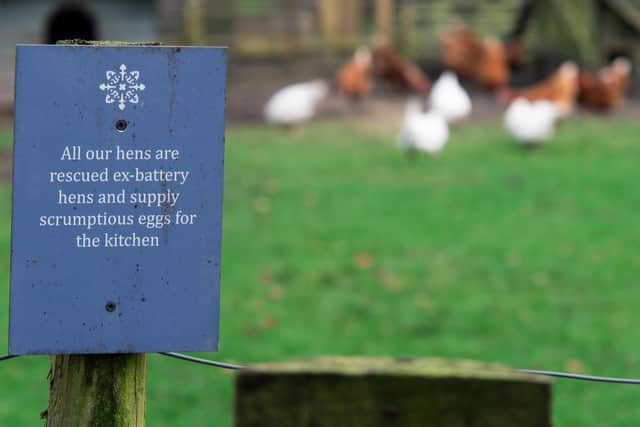

Advertisement
Hide AdAdvertisement
Hide Ad“There are now more fatalities in enriched colonies than battery cages because the birds are packed together and end up becoming aggressive and fight with each other.
“The problem is massive. The hens don’t have a life and they don’t see daylight. It’s why veganism is growing because people are realising how cruel the egg industry is.”
The sanctuary is taking in 400 birds this month, another 400 in April, and has saved more than 29,000 in total.
“They have absolutely amazing characters. They’re cheeky and curious, and all have their own individual personalities. They do all know their names if you give them one,” Allison added.
Advertisement
Hide AdAdvertisement
Hide AdSome 76 currently remain permanently on the site, which has become their “forever home”, due to long-term health problems.
What happens to hens in the egg industry?
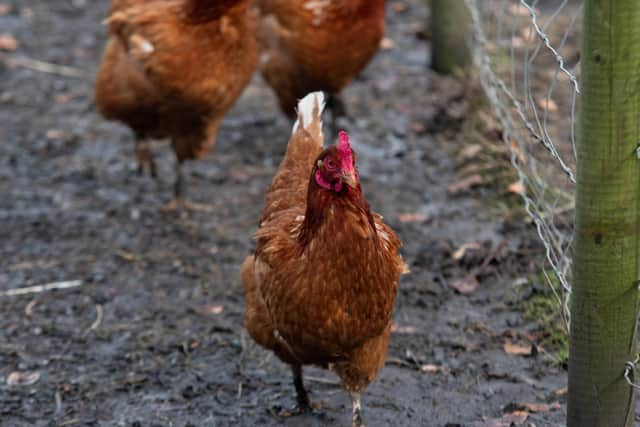

Battery cages were banned in the UK in January 2012. There are now only three higher welfare methods of egg production: free range, barn and enriched colony cage.
Hens that are used in the egg industry are sent to slaughter at the age of 72 weeks, when their egg production usually drops slightly, according to Lucky Hens Rescue. They are often sold for pet food.
Caged hens who spend their lives in very small cages laying eggs that can be bought in supermarkets, are usually sent for slaughter at around 18-months-old.
Advertisement
Hide AdAdvertisement
Hide AdBut those who are not forced to lay an egg everyday and are brought up in the right conditions can normally live up to 10 years, says Alison Thorpe, who set up the animal sanctuary.
“Their production should slow down in winter. Hens are like humans and they should have a day off, even in summer,” she added.
“But many farmers keep lights shining in their cages all the time to stimulate reproduction.”
The constant strain of this can lead to illnesses like egg yolk peritonitis. This is an inflammatory response caused by the presence of yolk material in the peritoneum (the thin layer of tissue covering the inside of the hen's abdomen and most of the organs) from a ruptured or retained egg in the oviduct. It can cause a lack of appetite, lethargy, occasional partial paralysis and sudden death.
Advertisement
Hide AdAdvertisement
Hide Ad“There are thousands of birds being killed every single day,” said Alison.
“And the amount of eggs being processed for supermarkets, baked goods, mayonnaise and salad cream is phenomenal. It’s sad because you could make these things without them.”
Alison says that advertising telling us what to eat and that eggs are good for us, is partly to blame.
“It’s led to mass cruelty,” she added.
What happens to male chicks?
Allison says male chicks are killed at one to two-days-old, usually in shredding machines or by gas.
Advertisement
Hide AdAdvertisement
Hide AdThis is because they have no economic value to the meat or egg industry.
She said: “I’ve seen some fed to chimpanzees, snakes and lizards at zoos.
“The males grow rapidly and aren’t kept by farmers because they are not worth anything as meat.
“There’s a 60-40 chance that chicks will be males.
“We ask people, especially schools, not to hatch chicks because they cannot house the males due to the noise of cockerels.”
Advertisement
Hide AdAdvertisement
Hide AdAbout seven billion unwanted male chicks are killed around the world each year.
But France has vowed to ban the practice by the end of 2021. Its Government says new methods that would allow the sex of embryos inside the egg to be tested are emerging.
Comment Guidelines
National World encourages reader discussion on our stories. User feedback, insights and back-and-forth exchanges add a rich layer of context to reporting. Please review our Community Guidelines before commenting.